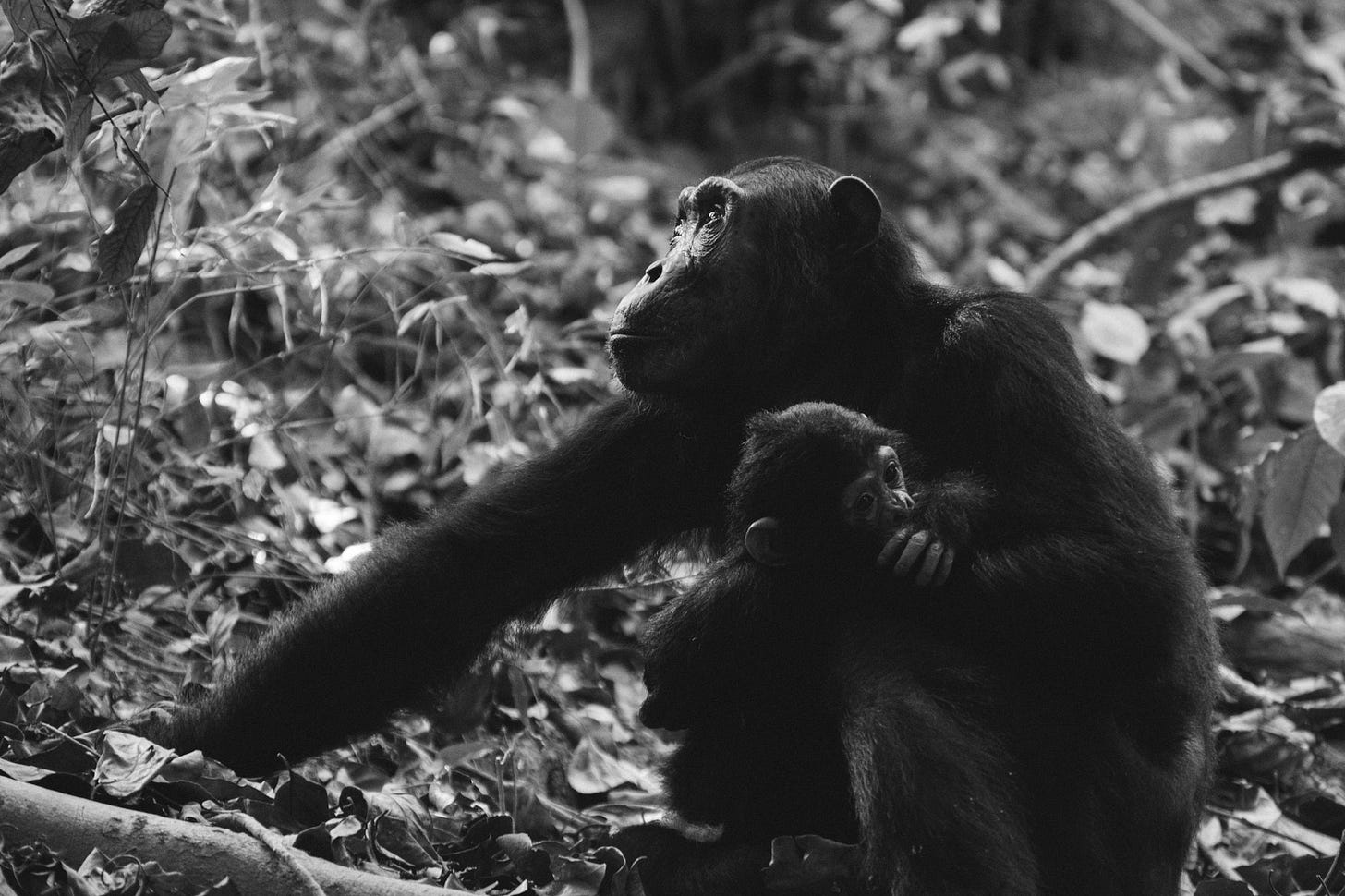How the lives of mothers matter to offspring survival in wild primates
A paper by Matthew Zipple and coworkers finds that the survival of young primates depends on their mothers "well beyond the age of weaning".

A new research paper by Matthew Zipple and coworkers looks at the impact of maternal mortality on offspring survival across seven species of wild primates: “Maternal death and offspring fitness in multiple wild primates”. The authors combine demographic data from long-term field studies, yielding the best statistical tests yet of how mothers’ lifespans matter to offspring survival.
Primate offspring often depend on their mothers well beyond the age of weaning, and offspring that experience maternal death in early life can suffer substantial reductions in fitness across the life span. Here, we leverage data from eight wild primate populations (seven species) to examine two underappreciated pathways linking early maternal death and offspring fitness that are distinct from direct effects of orphaning on offspring survival. First, we show that, for five of the seven species, offspring face reduced survival during the years immediately preceding maternal death, while the mother is still alive. Second, we identify an intergenerational effect of early maternal loss in three species (muriquis, baboons, and blue monkeys), such that early maternal death experienced in one generation leads to reduced offspring survival in the next. Our results have important implications for the evolution of slow life histories in primates, as they suggest that maternal condition and survival are more important for offspring fitness than previously realized.
This is a bit of a tricky analysis, because they find that offspring survival is lower for mothers who died within the four years following offspring birth. Their interpretation is that this likely reflects maternal health–mothers with poor health status are less able to invest in offspring and are also more likely to die within four years. The paper specifically excluded looking at what happened to offspring after the mother’s death; young offspring without a mother are already known to have high mortality.
The models in the paper include some estimates of hazard ratio, giving an indication of how important a factor the mother’s upcoming death is to offspring survival. In species where the effect was significantly different from zero, the estimate of hazard ratio varies from 0.3 to 0.8 or so, meaning that offspring are around 30% to 80% more likely to die when their mothers will die the next four years following their birth. That’s a pretty big effect.
The second interesting finding is that death of a grandmother when a mother is young has an effect on survival of grandchildren born long after the grandmother’s death. This effect is significant across three of the species, and it does not result from the loss of grandmother’s investment during the grandchild’s life; it’s an effect channeled in some way through the mother.
For the relationship between offspring death and impending maternal death, the authors also consider an alternative model–that in some cases, the mother’s death may be an outcome of an offspring’s death, because grief affects health. They are unable to rule out this hypothesis and indeed describe a case study in which this seems a likely explanation:
Within the populations studied here, an example of the death of a white-faced capuchin mother from the Lomas Barbudal population is consistent with our expectations of what grief might look like in a wild primate. This female (Chaos) had lost three infants in less than 3 y, with male-perpetrated infanticide suspected to be the cause in each case. In the weeks following the final infant death, Chaos wandered the forest on her own, rarely appearing in daily censuses of her social group. She eventually died, less than 5 wk after the death of the third infant. At the same time, Chaos faced additional social challenges, including the deaths of her mother and sister and her immigration into a new social group. So, while we cannot state with certainty that grief resulting from the violent killings of her last three infants contributed to Chaos’ death, her case is fully consistent with the maternal grief hypothesis.
The two hypotheses do not contradict each other with respect to the data presented in the paper, and I expect that both maternal health as an underlying factor and psychological burdens of loss may be involved in some cases across species.
This is a neat piece of research. I want to highlight the consistency of these demographic effects across species. It’s not surprising that the health of mothers matters to offspring survival. What is profound is how the life courses of mothers shape the demography of social groups. When we look at many kinds of primates, social groups are dominated by matrilines in which maternal kin support each other in competitions for rank and resources. These bonds support the health of female individuals that have kin in the group and provide a basis for allocare of immature individuals. They also matter to the number of individuals in a social group, and how those individuals disperse among groups.



